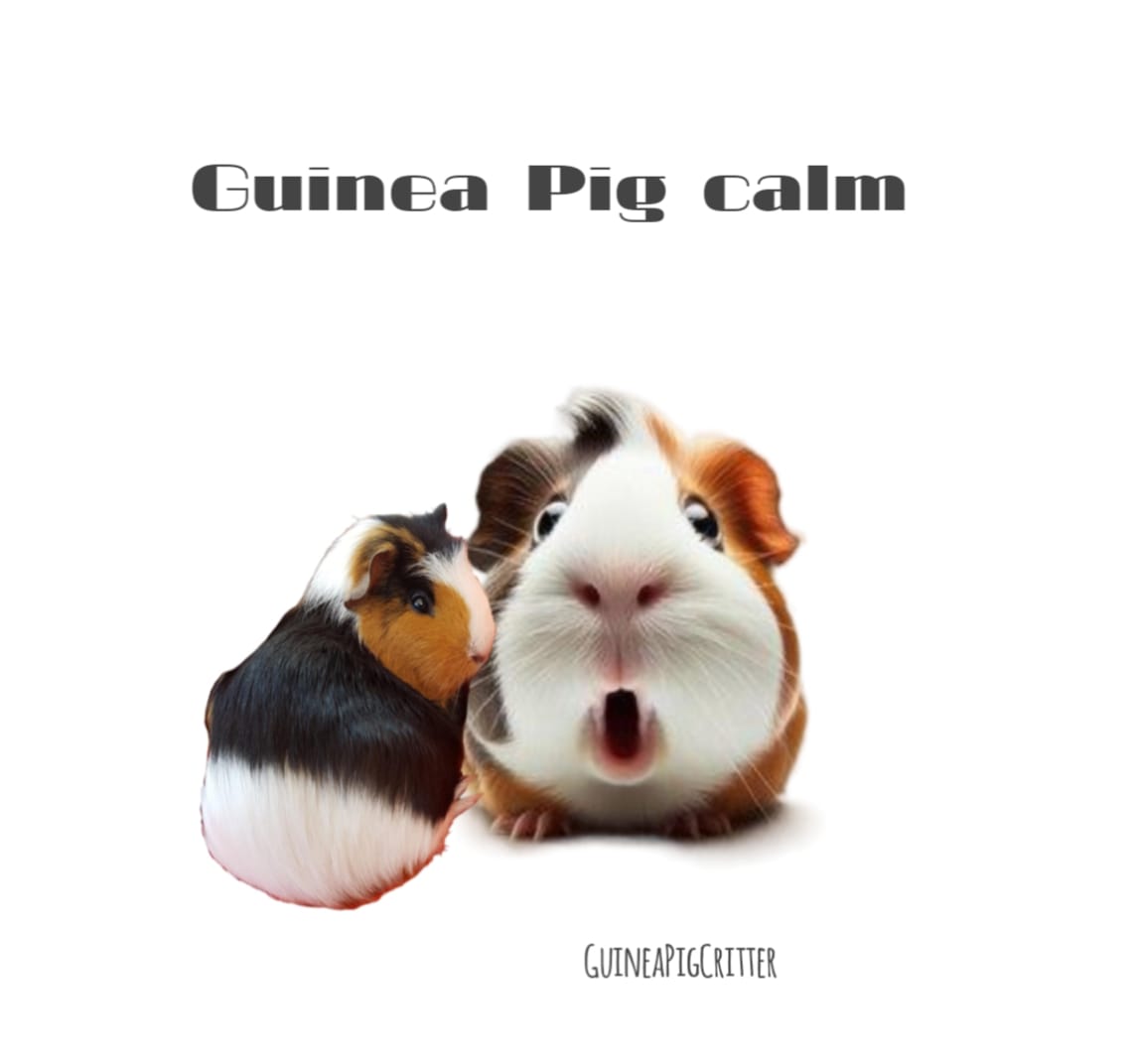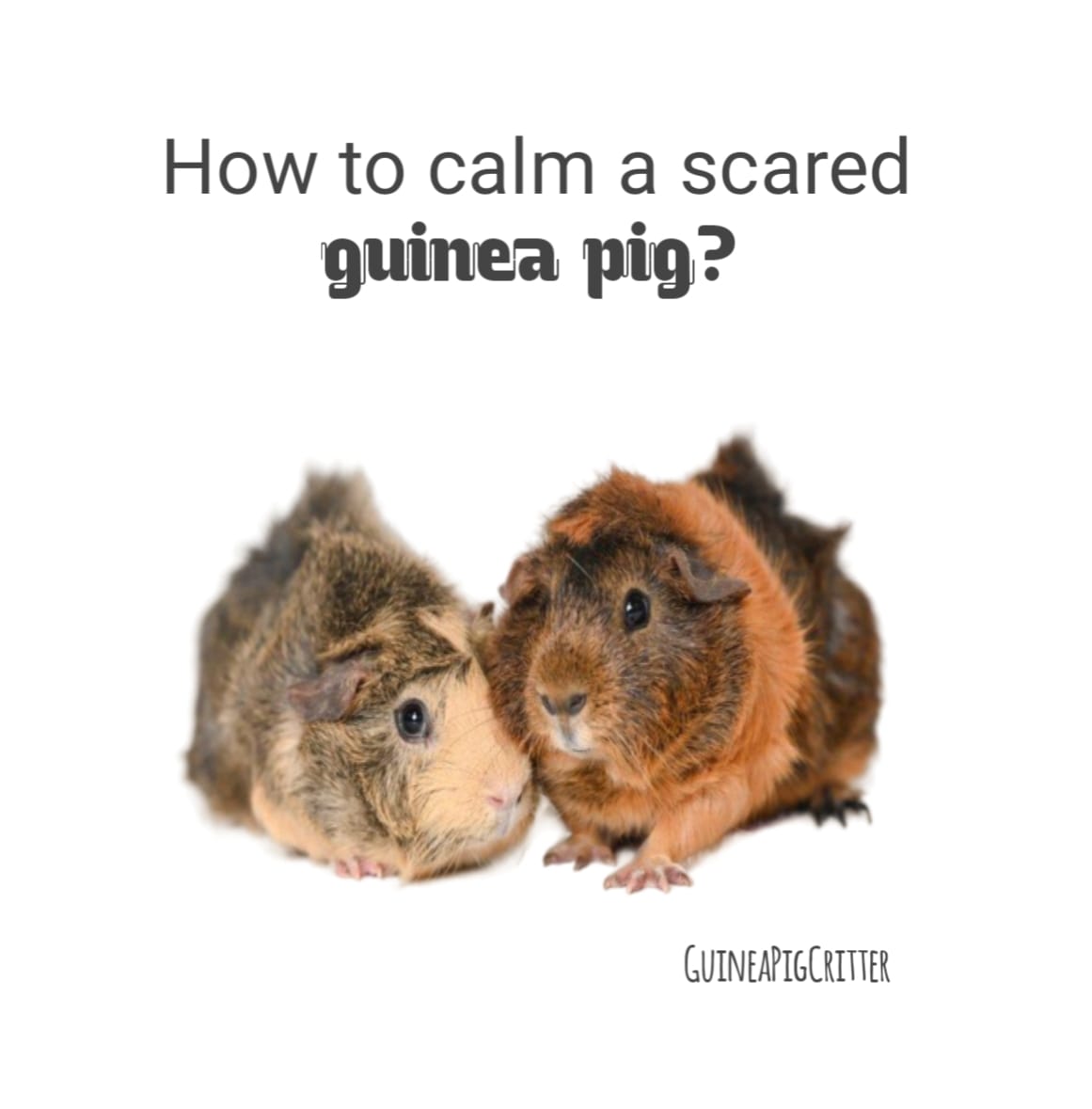Adopting a guinea pig for the first time or getting the impression that your usually quiet pet is frightened may not only be distressful but also traumatic for your pet. This is because, while guinea pigs are normally chilled-out and easy-going animals, they can get scared or become stressed in unfamiliar or distressing situations.
Many factors can give them a fright; it can be a shift in scenery, loud sounds or even the introduction of a different animal. However, knowing how to soothe a fearful guinea pig is important because it ensures the safety of your pet and reinforces the relationship you have with him or her.
See this post: best toys for Guinea pig
Causes of fear in guinea pigs
The first thing that one has to do when dealing with a frightened guinea pig for example would be to understand the indicators that frighten them. For instance, guinea pigs are not like other domesticated pets but instead are classed as prey animals, which means that their overriding instinct and reaction to a situation where there is danger is either to run away or just immobile. Below are some fear-related behaviors exhibited by guinea pigs.
Freezing: sudden freezing up of your pet guinea pig can also be suggestive of it feeling scared. The freeze response in this case is automatic behavior meant to assist in evading sight.
Hiding: guinea pigs do a lot of rushing to whom ever or whatever is nearest to a cover whenever they feel afraid so should you notice that your guinea pig is often in ones during hideouts a lot then it’s probably feeling insecure.
Teeth chattering: a sound made when a guinea pig feels stressed and wishes to avoid interactions with other pets or the owner.
Running in circles: these pets may move around in circles as a means to cope with stress, but it also means that they may need to be in a more peaceful area.
Heavy breathing or rapid movements: anguish can be caused by stress and may also lead to trembling and over-breathing.
These manifestations can be interpreted as requests for assistance, which ought to be addressed so that the affected guinea pigs may be mollified.
Reason for fear in guinea pigs
Knowing the fear of the pet will allow the owner to know how to ease the pet. These small animals have very acute senses, which makes them easily scared by the happenings within the vicinity. The following are the examples:
Loud noises: burglar alarms or a doorbell ringing can cause panic attacks on guinea pigs.
Unfamiliar people: constant exposure to strangers may make your pet nervous, hence, visitors make them afraid.
Environmental changes: picking the cage, new items, and change in decorations can affect the pet’s mental status due to change in environment as they loathe change.
Past trauma or negative experiences: the most likely fear trigger for such pets may come as a result of overshadowing them through birth or being kept in an unfavorable environment.
Other pets: the presence of other smaller and larger pets like cats or dogs moving around makes a guinea pig feel insecure.
Once you know the cause of your guinea pig’s fear, you can work on changing certain aspects of their environment or routines which contribute to their anxiety issues. Let’s take a look at some steps that you can do to soothe them.
How to calm down a scared guinea pig
Make sure that scared guinea pigs have a quiet place to go
Guinea pigs have an innate need for shelter, protection and safety. Prepare a space for their cage in a secluded area of the house without loud TVs, lots of movement or barking dogs. Some guinea pig owners also feel that a particular area or location instituted for the unit makes it less unnerving for the creature.
Place some intertwined or shredded paper and leaves where guinea pigs can go and feel protected. Such areas are similar to a wild guinea pig’s natural habitat, which consists mainly of tunnels and burrows. These areas are perfect for hiding. Wood dwarfs, igloo shelters and soft cloth tunnels have all been clinically proven to work.
Introduce your scent and voice gradually
As with most other pets, it is critical to help your guinea pig become accustomed to you by allowing him or her to get used to your sight and voice. You should take the initial step by ensuring that you sit next to their cage and rest your voice while talking to them. Your guinea pig will begin hearing a voice and know that it is benign. And then you raise your hand placing it first on the doll on the coffin before you touch the doll in their cage. Gradually more doll become accustomed to it.
Engage the guinea pig with smooth and cautious movements and a soft voice
In contact with sudden movements and sharp sounds, the guinea pig shows signs of raising their paws in the air and running away. A quick burst of movement or even a loud voice can alarm them. When you stand close to their cage, walk in a gentle manner and do not move too quickly.
It is often easier to move towards them from the side rather than from above because it is less intimidating for them. They should not fear you rather they ought to feel protected as your voice and movements suggest that you are indeed not an aggressor.
Complement the relationship with treats
Treats are a good way to calm down a frightened guinea pig and associate the nice feeling with you as their owner. Bell peppers, green leaves, and a small portion of carrots are some examples of food that can be used as treats. Let us get started by offering them a treat while instructing them with a calm voice; if they look too frightened to grab the treat normally, you can place the treat behind the hiding place where they can reach it in due time. Eventually, in due time, they will become accustomed to you and the concept of grabbing treats offered to them.
Set a custom timetable to foster regularity
Guinea pigs, like most pets, are creatures of habit, and a reliable schedule can help ease their stress levels. Providing food at consistent times every day and being on time with cleaning and playtime allows them to anticipate what will happen next.
Give enrichment and play to build confidence
Your guinea pig’s attention may be directed toward inquisitiveness instead of anxiety with the use of enrichment. You may put toys, tunnels, and even safe chewable to keep them busy. It is also a good idea to play some gentle games, such as hiding treats around the cage for the guinea pig to find, which encourages them to explore and increases their confidence. This step not only provides mental stimulation but also allows your guinea pig to understand that the cage is safe and a good place to be.
It takes time to build that trust
Trust building in a stressed out guinea pig is not an instantaneous process. Some guinea pigs will begin to settle down in a matter of days but others can take weeks to months. Remember that all guinea pigs are different and will respond at the same level within the same time. It does require a good amount of patience.
Some bonding activities include
Sitting on the lap: after some time where the guinea pig responds accordingly, try transferring the cuddly pet onto your lap for several quiet periods. A soft towel can be used to cover the pet and a treat can be given so that the pet understands bending down on the lap is not bad.
Daily interaction: even by just placing yourself in their environment and talking to them regularly helps give your pet the sense of safety and protection that they need.
Gentle handling: when you pick up your guinea pig, ensure that you use both hands to catch and support its body, and remember to move slowly and steadily. These movements allow them to feel safe.
What not to do when soothing one’s pet tortoise
Guinea pigs may experience some feelings of fear due to some actions which may be inadvertently taken as a remedy for the situation. The following are the uprooted things to avoid:
Avoid noisy actions: when exposed to loud sounds, guinea pigs make feral panic. Do not bang doors, fist pump the ceiling, raise an album so loud everyone has to stand up and scream at the top of their lungs, or operate loud machines near the guinea pigs’ cage.
Do not try making them play: there is no need to make your guinea pig play if it u-bolts into the closet and refuses to come out. He will show interest in it on his own accord – just be a little patient.
Do not attempt to grab them from above: dogs and cats normally swoop down on their prey, and if you try to reach for your guinea pig, chances are he is absolutely terrified. Instead, try speaking plainly and looking head-on with the guinea pig.
Do not allow them to get too many toys or people: they may become frightened by too many toys, hideouts, or toys. For better comfort, maintain a cool and clean space for their environment.
Tips to make them comfortable
Maintain background music: soft music in the background may be useful for some guinea pigs. It provides peace to guinea pigs as it can cover up unexpected loud sounds that would make them jump.
Avoid intense scents: with a very heightened sense of smell, there’s no need for guinea pigs to be exposed to overly scented candles, sprays, or perfumes.
Give them time: at times, giving a guinea pig time alone can go a long way in helping it calm down. Make sure they have ample quiet time, especially if they have just moved into a new space.
Conclusion
There are no shortcuts towards calming a frightened guinea pig. Instead, it is a process that requires time, a careful approach, and steady commitment to the cause. You are able to read your guinea pig and act on instinct by creating conditions that are suitable and safe, reducing the chances of annoyance.
Over time as one establishes trust by use of gentle voice, following routines, and positive experience, the guinea pig will bond with you and overcome fear.
Eventually, as time goes by, you’ll see that your piggy is more confident, is filled with curiosity and is faced with less anxiety while in the environment around them. Over time, through love and care, the piggy will learn to saw its owner as a source of comfort. Therefore, don’t rush in understanding what the guinea pig is going through, and know that each behavior exhibited is part of the healing process.


